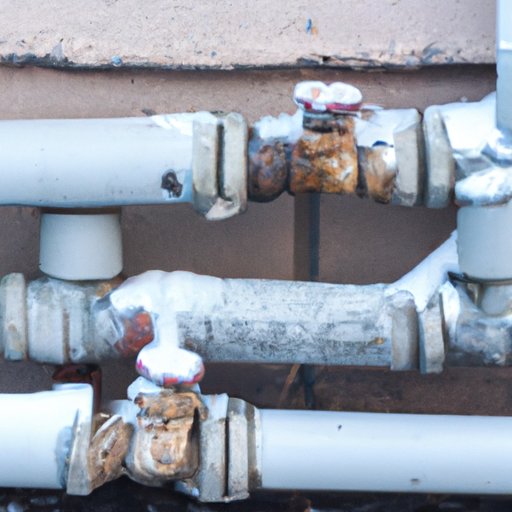How to Keep Your Pipes From Freezing
Winter weather can be beautiful, but it can also cause a lot of problems around your home. One common issue is frozen pipes, which can be costly and time-consuming to repair. When pipes freeze, the water inside them expands and can cause the pipe to burst, leading to water damage and high repair bills. Fortunately, there are several steps you can take to prevent pipes from freezing. In this article, we’ll provide you with tips and tricks to keep your pipes from freezing this winter.
Insulate the Pipes
Insulating your pipes with foam tubes is one of the best ways to prevent them from freezing. Foam tubes can be purchased at most hardware stores and are easy to install. By insulating your pipes, you’re helping to maintain the heat within your pipes and preventing them from getting too cold. Additionally, insulation can help cut down on energy costs by keeping the water in your pipes warmer. Here’s how to insulate your pipes using foam tubes:
- Measure the length of the pipe you need to insulate.
- Cut the foam tube to the desired length with a utility knife.
- Slit the tube lengthwise so you can fit it around your pipe.
- Wrap the tube around the pipe, securing it with duct tape where necessary.
While foam tubes are the most common material used to insulate pipes, other materials include fiberglass and foil-backed insulation. If you’re unsure which type to use, ask your local hardware store for recommendations.
Keep the Heat On
One of the biggest mistakes homeowners make during cold weather is turning down the heat or turning it off completely, especially when leaving for an extended period. However, doing so can cause your pipes to freeze and lead to costly repairs. Keeping your heat on and setting the thermostat to at least 55 degrees will help maintain a consistent temperature throughout the house and prevent pipes from freezing. For long absences, don’t set the thermostat below 55 degrees. It is worth the cost to keep the heat on while you’re away. Doing so can prevent the need for costly repairs in the long run.
Drip Faucets
When water freezes, it expands and puts pressure on the pipes. That pressure can cause pipes to burst, even if they’re insulated. To release that pressure, try dripping your faucets. This will keep the water flowing through the pipes and prevent them from freezing. Here’s how to do it:
- Turn on a faucet at the highest point in your house.
- Turn on another faucet at the lowest point in your house.
- Allow both faucets to drip at a slow but steady pace.
It’s important to note that even if you’re leaving for a short period, you should still drip your faucets. It’s better to be safe than sorry, and the amount of water wasted is minimal compared to the cost of repairs for burst pipes.
Open Cabinet Doors
On extremely cold days, pipes located under sinks can easily freeze. To prevent this, try opening cabinet doors to allow heat to circulate and warm the pipes. This will also help reduce drafts and prevent your pipes from getting too cold. Make sure to keep cabinet doors open until the temperature outside has risen, and your pipes are back to normal.
Wrap Exterior Pipes
Exterior pipes are more exposed to cold temperatures than interior pipes. That means they’re much more susceptible to freezing and bursting. To prevent exterior pipes from freezing, wrap them with foam insulation or heat tape. This will help maintain the temperature of the water inside and prevent them from bursting due to cold temperatures. Make sure to cover all outdoor pipes that are susceptible to freezing, including those in your garage, attic, or crawlspace.
Conclusion
Preventing frozen pipes can save you a lot of stress and money in the long run. Insulating pipes, keeping your heat on, dripping faucets, opening cabinet doors and wrapping exterior pipes are all simple steps you can take to protect your pipes during colder months. Remember to keep your home warm, and your pipes will thank you. Winter weather can be unpredictable, so make sure you’re adequately prepared so that you don’t end up with costly repairs to your home.
